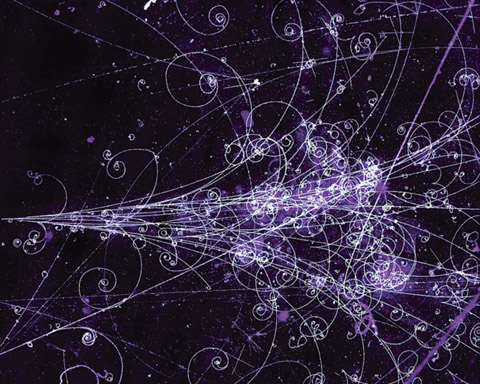Bubble Tracks: A Window on the Subatomic
February 5, 2018
Particle Tracks: Art from Science

What's Going On Here?
You're looking at the tracks created by subatomic particles in a strong magnetic field. When a charged particle moves through a magnetic field, its trajectory curves one way or the other depending on its charge. By studying the path of a certain particle, scientists can learn about its mass, charge, and velocity. For instance, nearly-symmetrical pairs of spirals indicate the creation of a particle-antiparticle pair, where raw energy is converted into an electron and its antimatter counterpart, a positron, at the same time. For this image, the enormous amount of concentrated energy that it takes to cause such reactions was created at the Superconducting Proton Linear Accelerator, a part of CERN. But how do we photograph something too small to be seen with the naked eye? The answer, surprisingly, can be found in a cup of tea.
Ordinarily, water boils at 100°C. But if, in making some tea, you've ever left a mug full of water going for too long in the microwave, you might have found out the hard way that water can exceed this temperature as long as it's not disturbed. When a liquid is well above its boiling point but remains a liquid, we say that it's in a superheated state—and jostling or dropping something into the liquid can cause it to transition quickly to its gas phase. In the case of a mug of water, it can lead to a miniature explosion and nasty steam burns, when a bunch of water turns to gas at once. In a controlled setting, however, superheated liquids—usually liquid hydrogen, which has a VERY low boiling point—can give us a glimpse into the subatomic world. When a charged particle zips through the liquid, it jostles things just a tiny bit, leaving a thin trail of boiling liquid in its wake. Placed against a dark background and photographed with a long exposure, these bubble trails show up as tracks, like the ones you see here.














